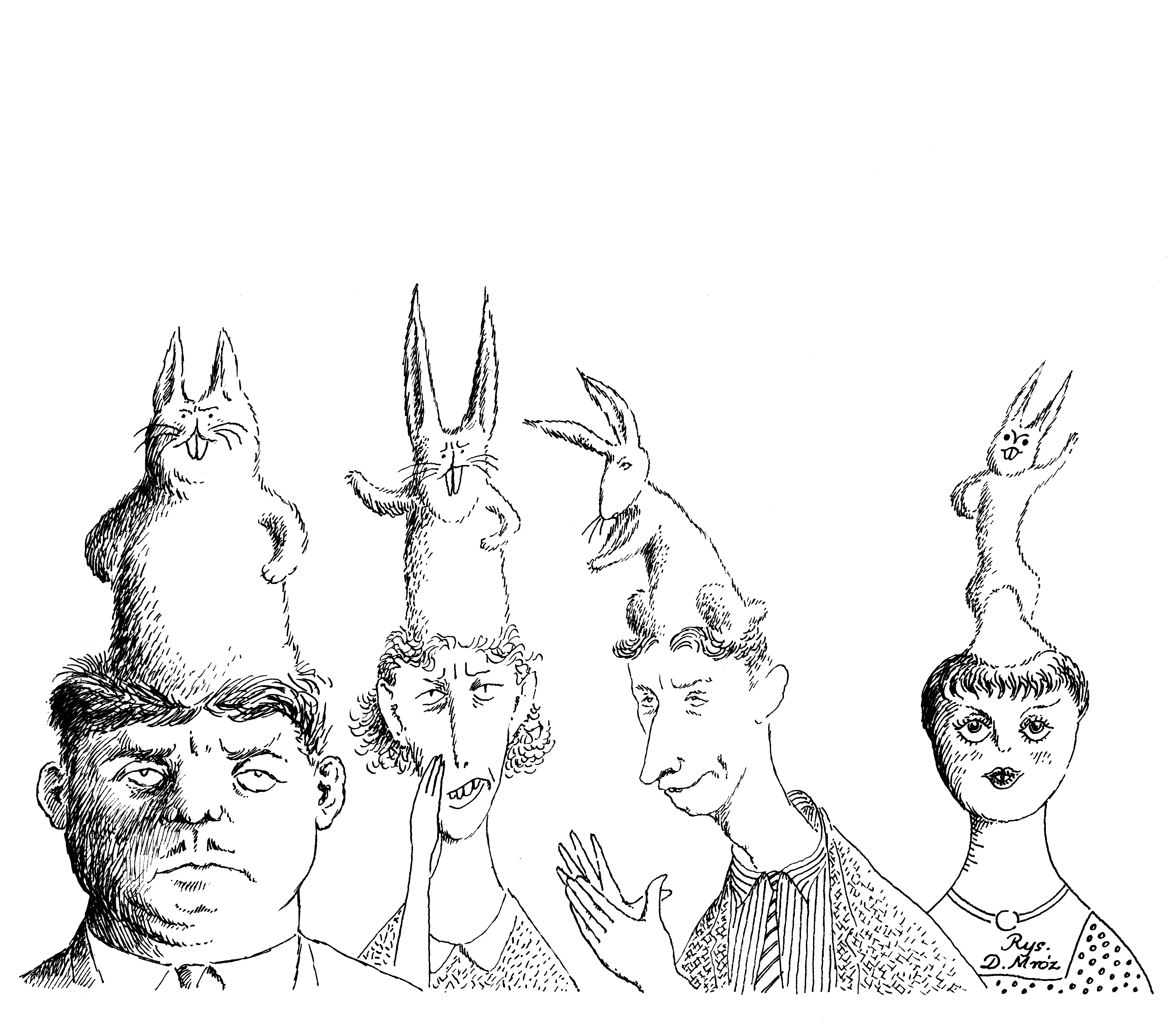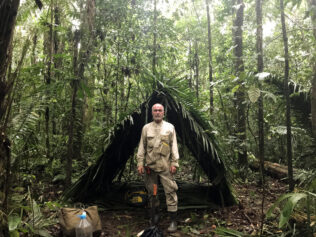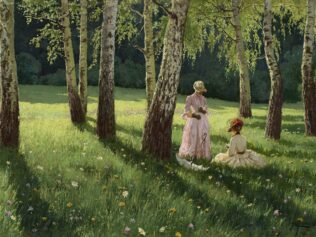
Under the forest litter, trees build a network of connections that could be the envy of humans. It transports not only nutrients, but also information – about fires, droughts and environmental conditions. This speech of trees, and the relationships connecting them, were discovered by a certain persistent Canadian.
In one of the chapters of his book The Hidden Life of Trees, Peter Wohlleben gives a rather enigmatic description of how it was proved that various trees species can communicate. He doesn’t, however, refer us to the research. The secret behind that mysterious experiment is an extraordinary woman and her ground-breaking discoveries from 35 years ago, which permanently changed our perception of trees. They initiated a whole range of research regarding the symbiosis of trees and mushrooms at the Faculty of Forestry (University of British Columbia, Vancouver). On Polish Wikipedia, almost every other piece of information concerning mycorrhizal networks refers to the research co-authored by the Canadian. Recently she also inspired Richard Powers, author of the 2019 Pulitzer Prize-winning novel The Overstory. The writer used her biography to create the fictional character of the dendrologist Patricia Westerford.
Meet Suzanne Simard, who was the first to prove that trees communicate.
Favour for favour
Simard – the granddaughter of a logger who ferried trees out of the forest using horses (which is still considered the best method for the ecosystem) – grew up in the woods of British Columbia, which take up 70% of this westernmost Canadian province. Canada has the third largest forest surface in the world, after Russia and Brazil. Incidentally, it’s worth knowing that more than half of the Earth’s forests grow in just five countries.
As a girl, Suzanne would lie down and watch the crowns of cedars, spruces and Douglas firs – some of the tallest trees in the world. Her playground was shaded by those giants. No wonder that she studied forestry, like her grandfather and uncles. However, she soon realized that her work contributes to the clearcutting of trees with industrial monster-machines which take seconds to topple a tree. She decided to leave the forest and return as a researcher.
At that time, a laboratory discovered that a pine root is able to send carbon to another root. Suzanne decided to check whether this also happens in a real forest. “Some people thought I was crazy, and I had a really hard time getting research funding. But I persevered,” she recalls in her TED Talk. The recording has been viewed more than a million times.
In a forest, Simard grew 80 young trees of three species: paper birch, Douglas fir and western red cedar. She covered the plants tightly with plastic bags, under which she pumped CO2 isotopes with huge syringes: the birch was surrounded by the radioactive isotope carbon-14; the fir with the stable carbon-13. After an hour, she took the bag off the birch and tested it with a Geiger counter. As expected, it beeped: the birch had absorbed the radioactive isotope. Simard approached the Douglas fir, removed the bag, moved the Geiger counter close and held her breath for a second. Then she heard the characteristic beeping again! Because both trees were covered with plastic foil, the radioactive carbon could have reached the Douglas fir only through the root system.
The counter’s buzz was evidence of the subterranean communication of trees. Simard reported: “The birch said: ‘Hey, can I help you with anything?’. And the fir said: ‘Yes, please, send me some carbon, because someone put a bag on me and I can’t photosynthesize.’.” Excited, she ran from one tree to the other, and each measurement confirmed her discovery. The Geiger counter was silent only at the western red cedar: those trees turned out to be disconnected from the network of birches and firs.
Soon various relationships started becoming apparent: the more shaded the fir was in the summer, the more carbon the birch sent it. But later, in autumn, the coniferous fir had a surplus of carbon, because it was still photosynthesizing, so it helpfully sent it to the birch, which was already losing leaves. “I knew I discovered something huge that would change the perception of trees in a forest: no longer as competitors, but also as collaborators. I found hard proof of a huge underground network of communication, a different world,” said the researcher.
This was 30 years ago. Since then, Simard and her team have published hundreds of papers. Thanks to them, we know more about what happens under the litter, where tree roots take up an area that can be many times the size of their crowns.
A network of relationships
Simard has a clear recollection of the moment when she understood that the forest is more than its visible, terrestrial part. She was with her grandfather at their allotment. Her dog fell into the hole under the outhouse, and grandpa started to dig next to it to save the animal. The young Suzanne saw twisted roots, white mycelium, reddish and greenish minerals. The dog was saved, and Suzanne became fascinated with the underground world.
Trees often connect directly via their roots, but the most important part of mass communication is played by fungi, which create so-called mycorrhizal networks. The toadstool-shaped mushrooms that we collect are just the fruiting bodies, the tips of icebergs: the vast majority of the fungus, its mycelium, extends underground and suffuses every bit of the surrounding soil. There are about 100 species of mycorrhizal mushrooms. Their hyphae create a network so dense that one tablespoon of soil could fit a few kilometres of it, and we could find a few hundred kilometres under a footprint. The mycelium works a bit like the internet; scientists have long been calling it the Wood Wide Web.
The fungus cells conduct barter with tree cells – fungi cannot photosynthesize, so they draw sugar from trees. They exchange it for nutrients, which they obtain from soil more successfully than trees. At the same time, they enable the transport of various other substances and communication. It’s not really clear why they throw in this latter service. Perhaps it is profitable to the fungus to have connections with many trees? Or maybe it’s that trees reduce the amount of sugar dispatched if the fungus does not allow them to connect with others?
What do trees give each other? It turns out that it’s not just carbon, but also phosphorus, nitrogen, water and information in the form of chemical and electric impulses. For example, they send warning signals about a pest attack, so that other trees can prepare and fend it off with defensive enzymes.
At mother’s knee
The network created by fungi and trees has hubs and links. Hub trees or mother trees are the most important: the oldest and largest, connected with up to a few hundred other trees. They are the guardians of the sylvan community. They check in with their neighbours; share food and knowledge acquired throughout a long life. Thanks to the underground network, they send surplus carbon to young seedlings, which quadruples their chances of survival. What’s more, they can recognize their kin – they provide more food to youngsters with a similar genetic profile (although this doesn’t mean that they completely ignore seedlings unrelated to them). When mother trees get injured or are preparing to die, they bestow their wisdom on the next generations, especially those related to them. Although we don’t yet know which part of trees houses their memory, it definitely exists – the oldest trees remember bygone droughts and can adjust themselves and their environment to the changing climate. This is why in non-supervised forests, old stumps – which have no leaves, and hence no ability to photosynthesize – are still alive. Their neighbours nourish them via the underground pathway, because the knowledge those trunks have may be of use to surrounding plants. Tree stands behave like old human communities: they care both for the youngest members and the oldest, wisest ones.
“After years of work in the forest, I started to see what happens underground as the tree’s brain,” reveals Simard in a documentary entitled Intelligent Trees, where she speaks about her discoveries and observations along with Peter Wohlleben.
Priceless legacy
The dense underground network enables sylvan ecosystems to regenerate more easily and directly affects the health of the whole forest. This is why Suzanne does more than research. She also campaigns for balanced forest exploitation management, making use of ancestral wisdom and her own experiences as a forester.
Canada, so densely forested, also has one of the highest levels of tree cutting. Deforestation affects hydrological cycles, the distribution of gases and the lives of forest inhabitants. Seen from a satellite, large-scale clearcutting looks like bald spots left by alopecia, and it weakens the forest. The gaps are usually re-planted with just one tree species, frequently aspen or birch. Those forests are more prone to infections and more weakly communicated: the soil, damaged by huge machines, no longer transmits information, and there are no old trees around from which to learn. This means that a certain species of woodworm (Dendroctonus ponderosae) proliferates more freely in British Columbia than elsewhere, and there are unusually large fires. In 2014, more than three million hectares of forest burned down; it was the biggest fire in Canada’s Northwest Territories in 30 years.
Simard proposes a change in the way forests are managed. In her opinion, instead of clearcutting (completely cutting down patches of forest), it is better to leave behind a legacy: mother trees that are able to pass their knowledge on to new generations. “You can cut down one or two such trees, but there’s a critical moment: you cut down one too many and the whole system collapses,” she argues. Instead of planting one or two species, she recommends introducing diversity in new forests, and giving them time to establish their own order. She emphasizes that we need to save primaeval forests, as they are depositaries of genes. They no longer exist in Europe – apart from the Białowieża Forest in Poland. According to FAO (Food and Agricultural Organization of the United Nations), since 1990 we’ve lost 80 million hectares of this type of forest globally.
One of the oldest known trees, a Swedish spruce, is around 9500 years old. A healthy tree in a forest lives for around 400 to 500 years, if undisturbed. It has a chance to survive longer if it grows in a stand. Wohlleben writes that beeches which grow more densely – although they have small crowns and would seem to be rather uncomfortable – are healthier and more productive than the ones growing solo. Like people, trees growing in solitude usually have shorter lives, cut off from the live network of information and their care system.
In one of her interviews, Simard shared a personal story: “A few years ago I had breast cancer. Today I feel great. I survived it mainly thanks to my connections – the friendships I created. I felt that I’m experiencing what I study in forests. A tree is also going to be all right if only it stays a part of its own community.”
In writing this article, I used the following materials: a TED talk entitled “How trees talk to each other”, interviews with Suzanne Simard for the portal Yale Environment 360 and www.ttbook.org, the documentary “Intelligent Trees”, Peter Wohlleben’s book “The Hidden Life of Trees” and the article “It’s Not the Trees That Need Saving” at Earthisland.org.










